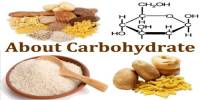According to a study led by researchers at the Johns Hopkins Bloomberg School of Public Health, children who were exposed to higher levels of trace minerals manganese and selenium during their mother’s pregnancy had a lower risk of high blood pressure in childhood.
The researchers examined the levels of toxic metals and trace minerals in blood samples taken from nearly 1,200 Boston-area women who gave birth between 2002 and 2013. Higher levels of selenium or manganese in the mothers’ blood were linked to lower blood pressure readings in their children at clinic visits 3 to 15 years later, the researchers discovered.
The researchers also discovered that when maternal blood levels of cadmium, a toxic heavy metal, were higher, manganese had a stronger inverse relationship with childhood blood pressure, implying that manganese lowers blood pressure in part by counteracting cadmium’s blood pressure-raising effect.
The results appear online in Environmental Health Perspectives.
Children who were exposed to higher levels of trace minerals manganese and selenium during their mother’s pregnancy had a lower risk of high blood pressure in childhood, according to a new study.
“These findings suggest that healthy levels of selenium and manganese in mothers’ diets during pregnancy may protect their children from developing high blood pressure,” says study senior author Noel Mueller, PhD, assistant professor in the Department of Epidemiology at the Bloomberg School of Public Health. “This research emphasizes the importance of nutrition and environmental exposures in the womb for a child’s cardiovascular health and, as we continue to research this, could eventually lead to updated nutritional guidance and environmental regulations aimed at disease prevention.”
Hypertension is a major modifiable risk factor for a variety of debilitating and fatal diseases, including heart disease, stroke, kidney failure, and Alzheimer’s disease. It is also very common; the Centers for Disease Control and Prevention estimates that approximately half of all Americans over the age of 20 have hypertension (defined as systolic blood pressure greater than 130 mm Hg or diastolic blood pressure greater than 80 mm Hg) or have been prescribed antihypertensive drugs.
Previous research suggests that the predisposition to hypertension can begin early in life, even in the womb, and that protection against that predisposition can also begin early. In the study, the researchers looked into the following issues: They compared children’s blood pressure readings to toxic metal and trace mineral levels in their mothers’ blood; they measured toxic metals lead, mercury, and cadmium, which have been linked to hypertension in adults; and they looked at levels of trace minerals manganese and selenium, which have been linked to lower blood pressure.

The dataset used for the analysis included 1,194 mother-child pairs from the Boston Birth Cohort study. Blood pressure readings were taken in children ranging in age from 3 to 15 years. The majority of the mothers (61 percent) were Black or Hispanic (20 percent).
Although previous research linked to lead, mercury, and cadmium to high blood pressure and heart disease in adults, the researchers found no link between these toxic metals and childhood blood pressure in this study. They did, however, discover a link between mothers’ selenium levels and lower blood pressure in their children during childhood. Children’s systolic blood pressure was found to be 6.23 points lower for every doubling of maternal selenium levels. Manganese had a similar, albeit weaker, relationship with blood pressure: doubling exposure was associated with an average 2.62 point lower systolic blood pressure.
Although cadmium was not found to be associated with childhood blood pressure on its own, the researchers discovered that when maternal blood cadmium levels were higher, the inverse relationship between manganese and childhood blood pressure was significantly stronger. This finding suggests that manganese can specifically protect against cadmium’s hypertension-promoting effect, and may even mask cadmium’s hypertension-promoting effect in healthy people.
“People frequently believe that exposure to heavy metals such as cadmium occurs only in occupational settings, but these metals are all around us — for example, cadmium is found in ordinary cigarette smoke,” says Mingyu Zhang, a PhD candidate in Mueller’s research group.
To emphasize the apparent cadmium link, the researchers discovered that manganese was significantly more strongly associated with lower blood pressure in children whose mothers smoked during pregnancy.
Manganese and selenium are antioxidants found in a variety of foods such as nuts and grains, leafy vegetables, fish, and shellfish. The researchers plan to replicate their findings in studies involving different birth cohorts. Under its Environmental Influences on Child Health Outcomes (ECHO) Program, Johns Hopkins maintains a registry of birth cohort datasets.
















